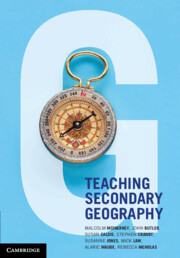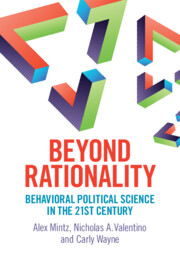Refine search
Actions for selected content:
36901 results in Cambridge Textbooks
Preface
-
- Book:
- Engineering Design Optimization
- Published online:
- 05 January 2022
- Print publication:
- 18 November 2021, pp xi-xii
-
- Chapter
- Export citation
Contents
-
- Book:
- The Law and Policy of the World Trade Organization
- Published online:
- 25 November 2021
- Print publication:
- 18 November 2021, pp v-xiii
-
- Chapter
- Export citation
1 - Reading a Poem
-
- Book:
- The Cambridge Guide to Reading Poetry
- Published online:
- 04 November 2021
- Print publication:
- 18 November 2021, pp 19-200
-
- Chapter
- Export citation
Table of Gatt Cases
-
- Book:
- The Law and Policy of the World Trade Organization
- Published online:
- 25 November 2021
- Print publication:
- 18 November 2021, pp xliii-xlvi
-
- Chapter
- Export citation
7 - Non-Tariff Barriers
-
- Book:
- The Law and Policy of the World Trade Organization
- Published online:
- 25 November 2021
- Print publication:
- 18 November 2021, pp 522-590
-
- Chapter
- Export citation
3 - Writing about Poetry
-
- Book:
- The Cambridge Guide to Reading Poetry
- Published online:
- 04 November 2021
- Print publication:
- 18 November 2021, pp 218-232
-
- Chapter
- Export citation
12 - Optimization Under Uncertainty
-
- Book:
- Engineering Design Optimization
- Published online:
- 05 January 2022
- Print publication:
- 18 November 2021, pp 441-474
-
- Chapter
- Export citation
6 - Tariff Barriers
-
- Book:
- The Law and Policy of the World Trade Organization
- Published online:
- 25 November 2021
- Print publication:
- 18 November 2021, pp 456-521
-
- Chapter
- Export citation
Contents
-
- Book:
- Engineering Design Optimization
- Published online:
- 05 January 2022
- Print publication:
- 18 November 2021, pp v-x
-
- Chapter
- Export citation
1 - International Trade and the Law of the WTO
-
- Book:
- The Law and Policy of the World Trade Organization
- Published online:
- 25 November 2021
- Print publication:
- 18 November 2021, pp 1-83
-
- Chapter
- Export citation
4 - Most-Favoured-Nation Treatment
-
- Book:
- The Law and Policy of the World Trade Organization
- Published online:
- 25 November 2021
- Print publication:
- 18 November 2021, pp 337-376
-
- Chapter
- Export citation
2 - The World Trade Organization
-
- Book:
- The Law and Policy of the World Trade Organization
- Published online:
- 25 November 2021
- Print publication:
- 18 November 2021, pp 84-172
-
- Chapter
- Export citation
D - Test Problems
-
- Book:
- Engineering Design Optimization
- Published online:
- 05 January 2022
- Print publication:
- 18 November 2021, pp 579-590
-
- Chapter
- Export citation
9 - Multiobjective Optimization
-
- Book:
- Engineering Design Optimization
- Published online:
- 05 January 2022
- Print publication:
- 18 November 2021, pp 355-372
-
- Chapter
- Export citation
7 - Gradient-Free Optimization
-
- Book:
- Engineering Design Optimization
- Published online:
- 05 January 2022
- Print publication:
- 18 November 2021, pp 281-326
-
- Chapter
- Export citation

Teaching Secondary Geography
-
- Published online:
- 12 November 2021
- Print publication:
- 13 December 2021
-
- Textbook
- Export citation

Beyond Rationality
- Behavioral Political Science in the 21st Century
-
- Published online:
- 11 November 2021
- Print publication:
- 02 December 2021
-
- Textbook
- Export citation
4 - Electrochemical Thermodynamics
-
- Book:
- Energy Conversion Engineering
- Published online:
- 13 January 2022
- Print publication:
- 11 November 2021, pp 217-267
-
- Chapter
- Export citation
1 - Low-Carbon Energy, Why?
-
- Book:
- Energy Conversion Engineering
- Published online:
- 13 January 2022
- Print publication:
- 11 November 2021, pp 1-33
-
- Chapter
- Export citation
Contents
-
- Book:
- Energy Conversion Engineering
- Published online:
- 13 January 2022
- Print publication:
- 11 November 2021, pp vii-xii
-
- Chapter
- Export citation
